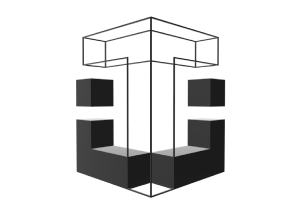Where did DAOs come from?
DAOs are Decentralized Autonomous Organizations, let’s unpack what that means.
Organizations are groups of people brought together by common interests. Organizations are usually centralized, and important decisions that impact the organization’s relation with its workers and clients, are decided by a small group of people, like the board of management.
In decentralized organizations, all people involved with a certain organization contribute to making these big decisions. Sometimes this applies to both workers and clients, think if Uber was ran by all the drivers and riders. Some other times, only workers are considered to be “stakeholders”, like with Worker Cooperatives, which are organizations completely or largely owned and managed by people their workers.
In principle, DAOs aren’t new. Decentralized autonomous organizations in the form of worker cooperatives have been out there for decades now, and are popular in countries like Spain and Portugal. These organizations tend to carry the spirit of labor syndicates and unions, and believe in a more decentralized and fair distribution of ownership and managerial power.
DAOs are basically a digitalization of worker cooperatives. You can think of them as Facebook groups with their own bank accounts and voting mechanisms. Say you and your friends created a new group, and a new person applied to join. You can create a proposal for accepting a new member, and all of you can vote on it. You can charge new members for $50 membership fee that will be deposited in the DAO’s vault (mini bank account), and then all of you can vote on what to do with the funds you collectively own. You can start an investment group, donate to a cause you care about, or rent a beach house for all of you to spend your vacation together.
Dynamic Partnership Protocol
We drew inspiration from DAOs and Worker Cooperatives designing our ownership model; we call it the Dynamic Partnership Protocol. Taxir will always be completely owned by its workers, and will work towards registering as a LAO (LLC / DAO) as soon as LAOs become a legislative reality.
The Dynamic Partnership Protocol is based on two mechanisms, Claiming and Erosion.
Workers can claim shares when matching certain thresholds of working hours, including unbilalble and unpaid hours (interns, founding members, volunteers). The first share can be claimed at 50 work hours, the threshold is then raised by decreasing factors (X1.5, X1.4, X1.3, X1.2, X1.1) before stabilizing at 180 working hours per share. For example, a worker can claim 7 shares for their first 890 hours.
50 + (50*1.5) + (50*1.5*1.4) + (50*1.5*1.4*1.3) + (50*1.5*1.4*1.3*1.2) + (50*1.5*1.4*1.3*1.2*1.1) + (50*1.5*1.4*1.3*1.2*1.1*1) = 890.66.
When a Taxir shareholder is idle for 365 days (the current threshold for idleness is less than 160 hours in 365 days), their shares will start getting eroded at a pace equal to the number of years they have been idle for. For example, one share will be eroded the first year of idleness, and 5 shares will be eroded the 5th year.
A shareholder can pause the erosion mechanism by matching the idle threshold, but to reset the pace of erosion, they must match the Reset Threshold, currently set at 300 hours in 365 days.At the end of every business quarter, Taxir will deduct its operational costs from the DAO’s vault, and divide the remaining funds / assets between shareholders proportionately.
The issuance and erosion of shares is automated and permissionless. Shareholders enjoy voting power equal to the number of shares they hold.This mechanism will see that people who worked at Taxir will continue to receive revenue after moving on to other ventures, for periods of time related to the time they spent working at Taxir. This will create a dynamic pension that grows with one’s involvement in Taxir.
In this sense, the shares represent an investment in Taxir’s future, and since they can’t be sold or liquidated (nope, no ragequit), the only way for leaving partners to ensure lasting value of their shares, would be to make sure they are leaving Taxir in safe hands and good shape.
Lastly, the erosion mechanism will prevent shares congestion in the future, where later workers will be under-incentivized since they have to pay increasing part of their returns to all previous generations of Taxir workers. Instead, the Claiming / Erosion mechanism will create an automated inheritance of ownership through dynamic grace periods.





